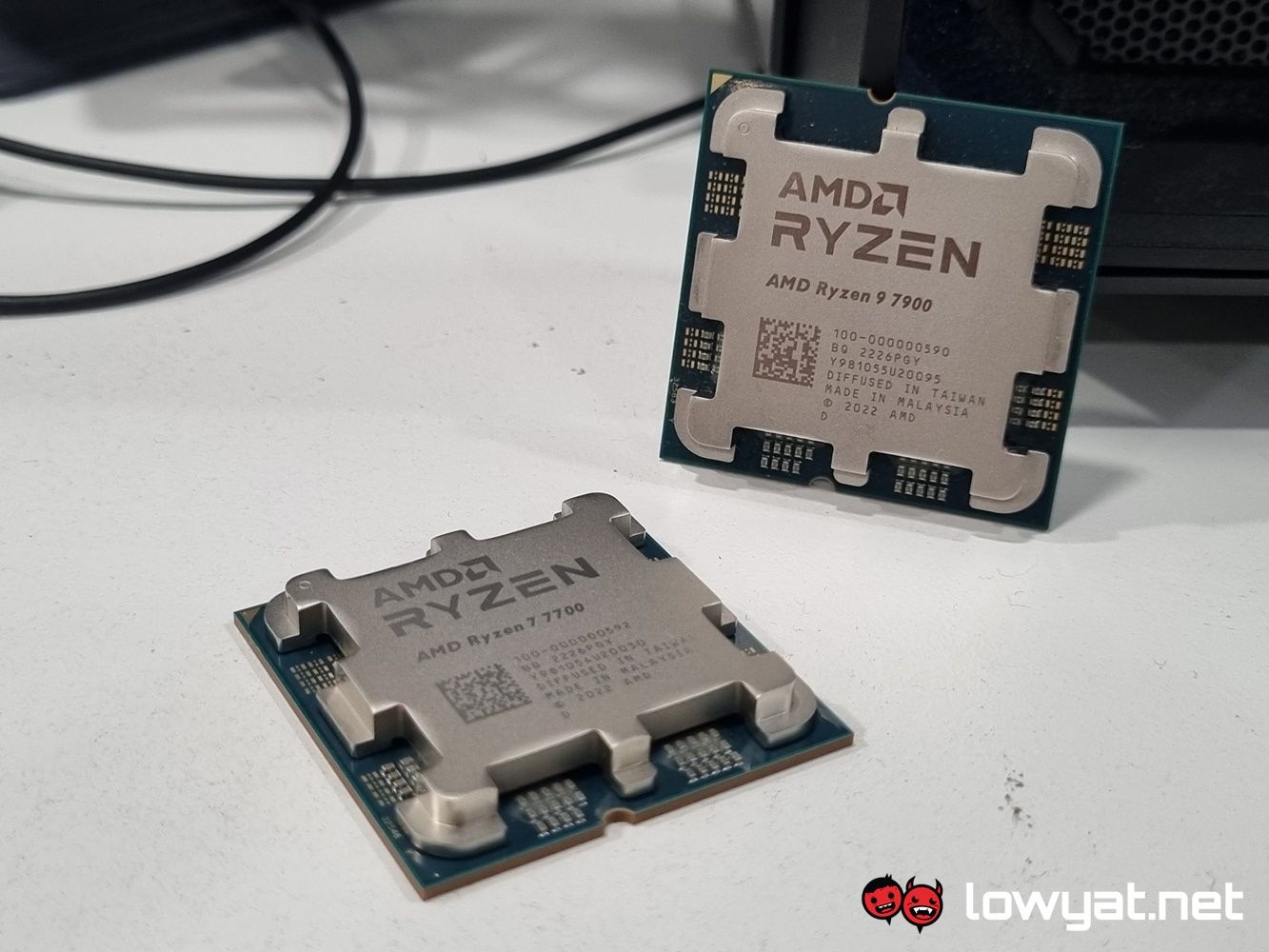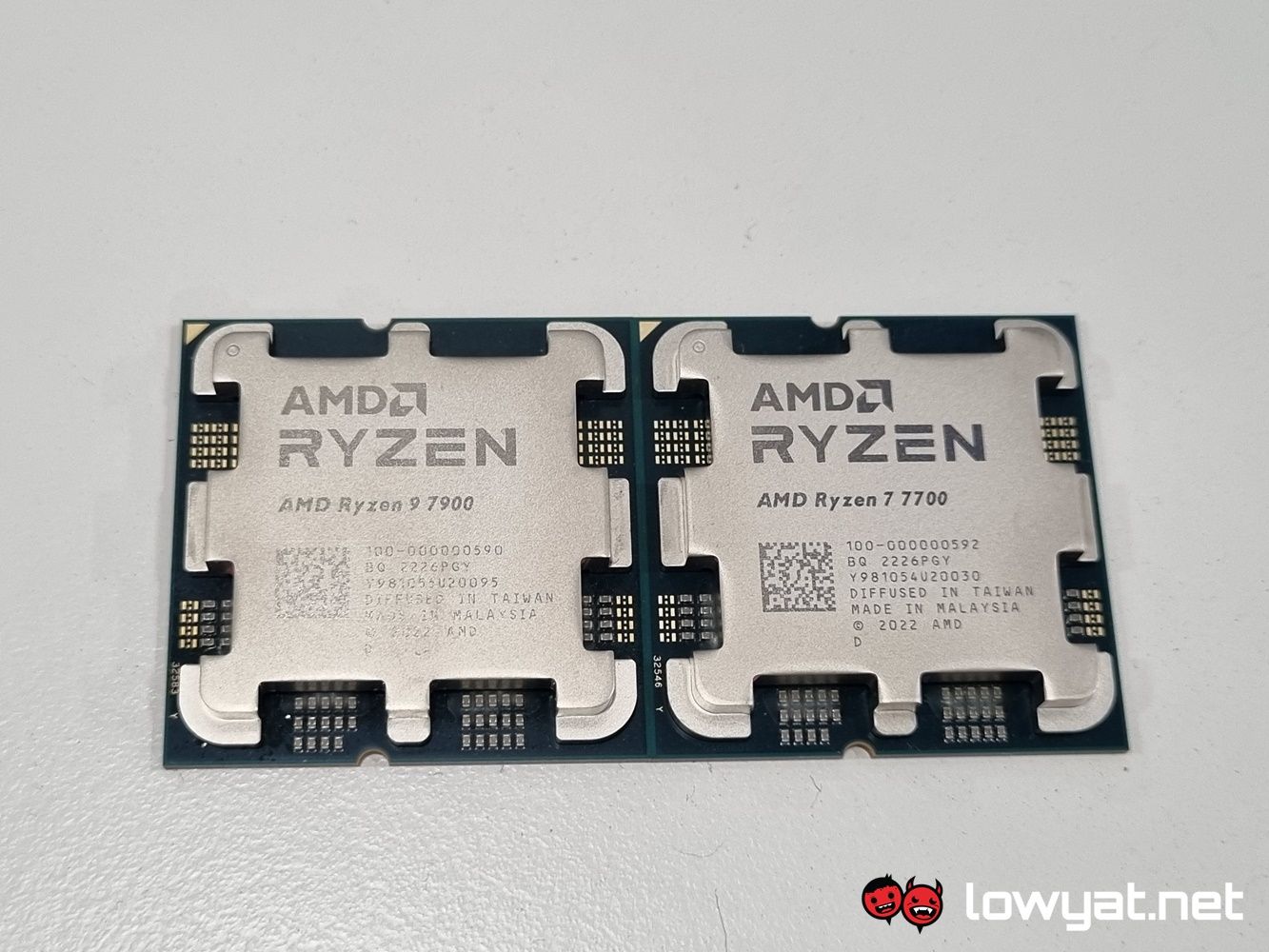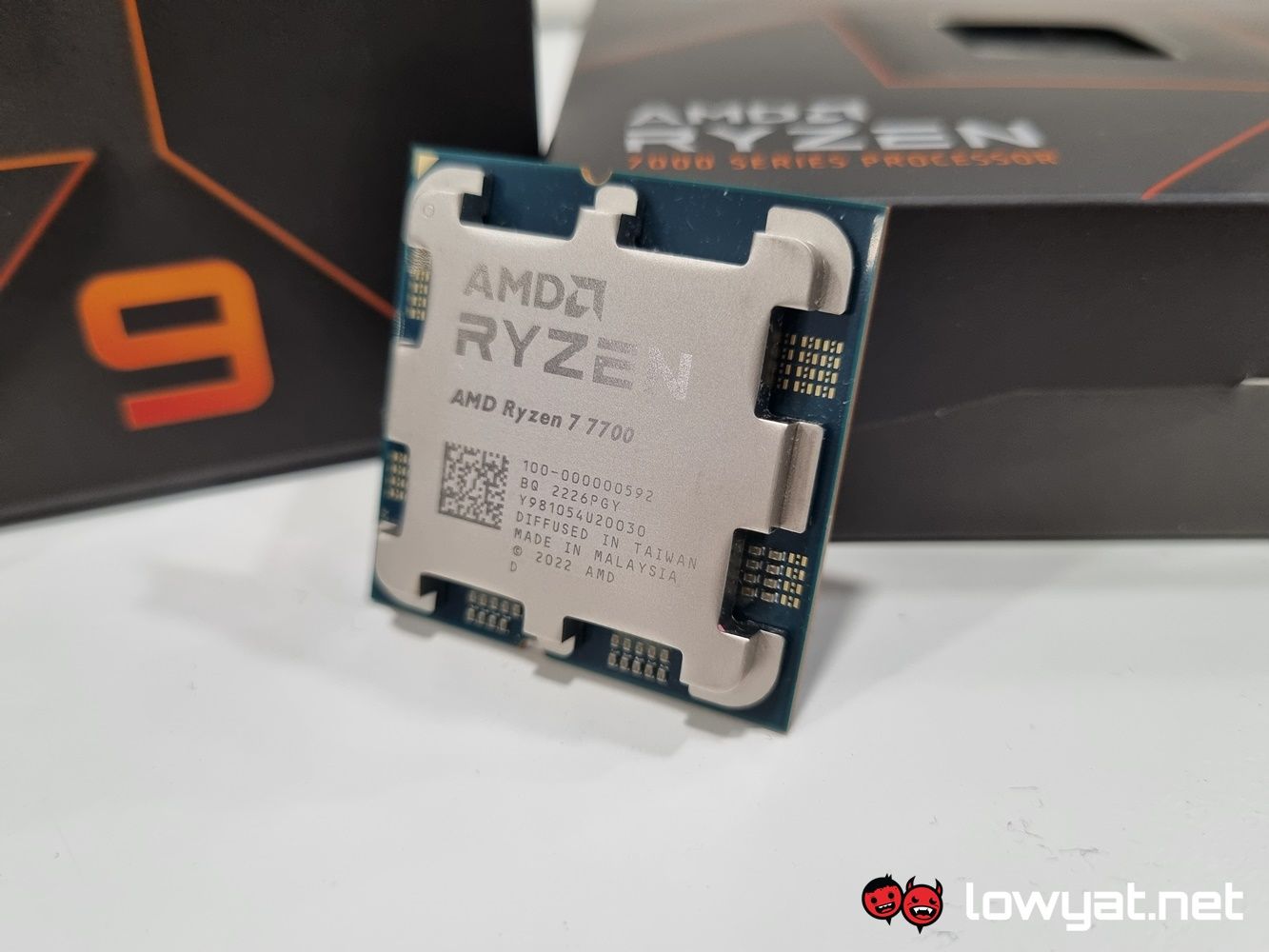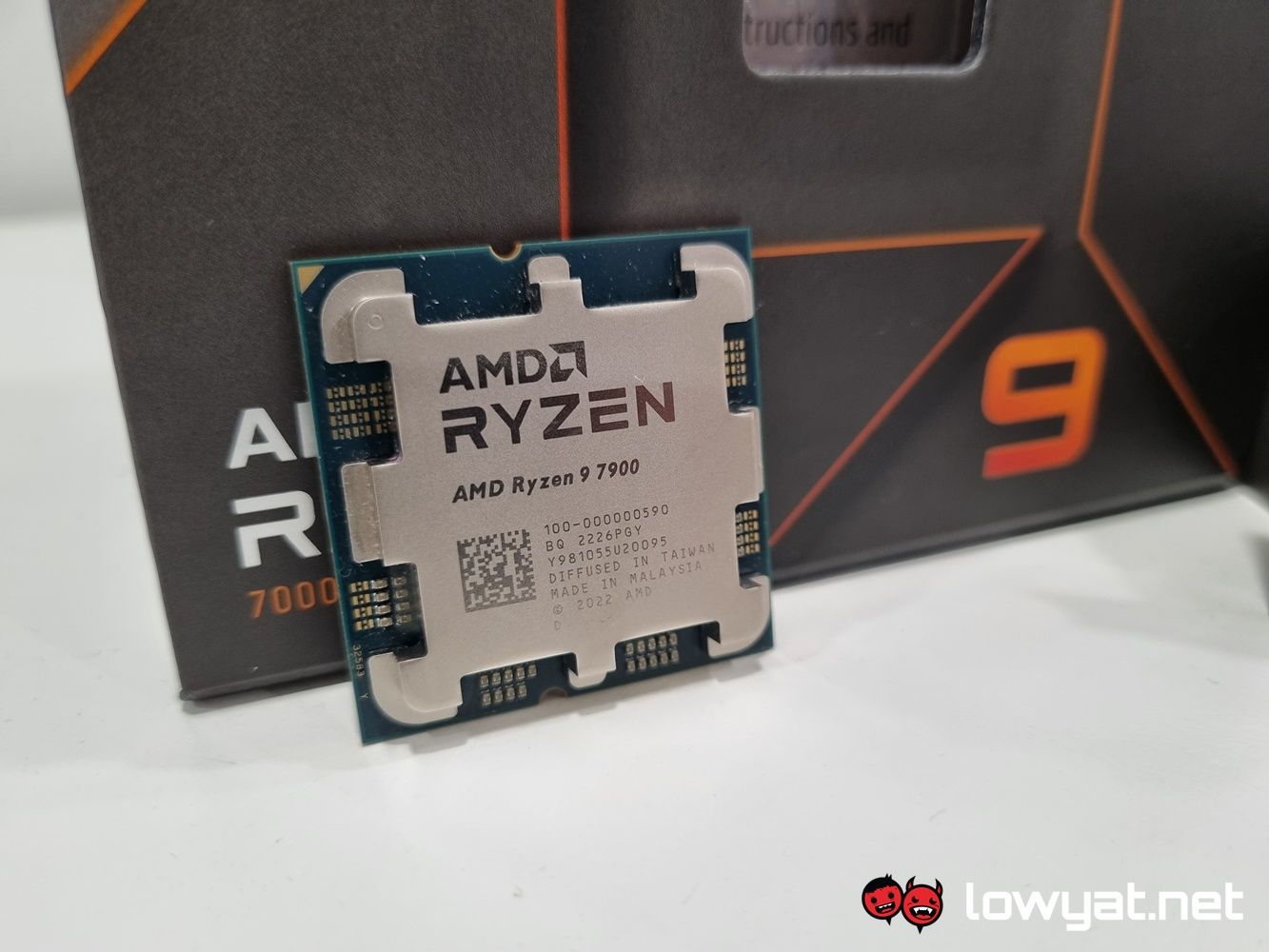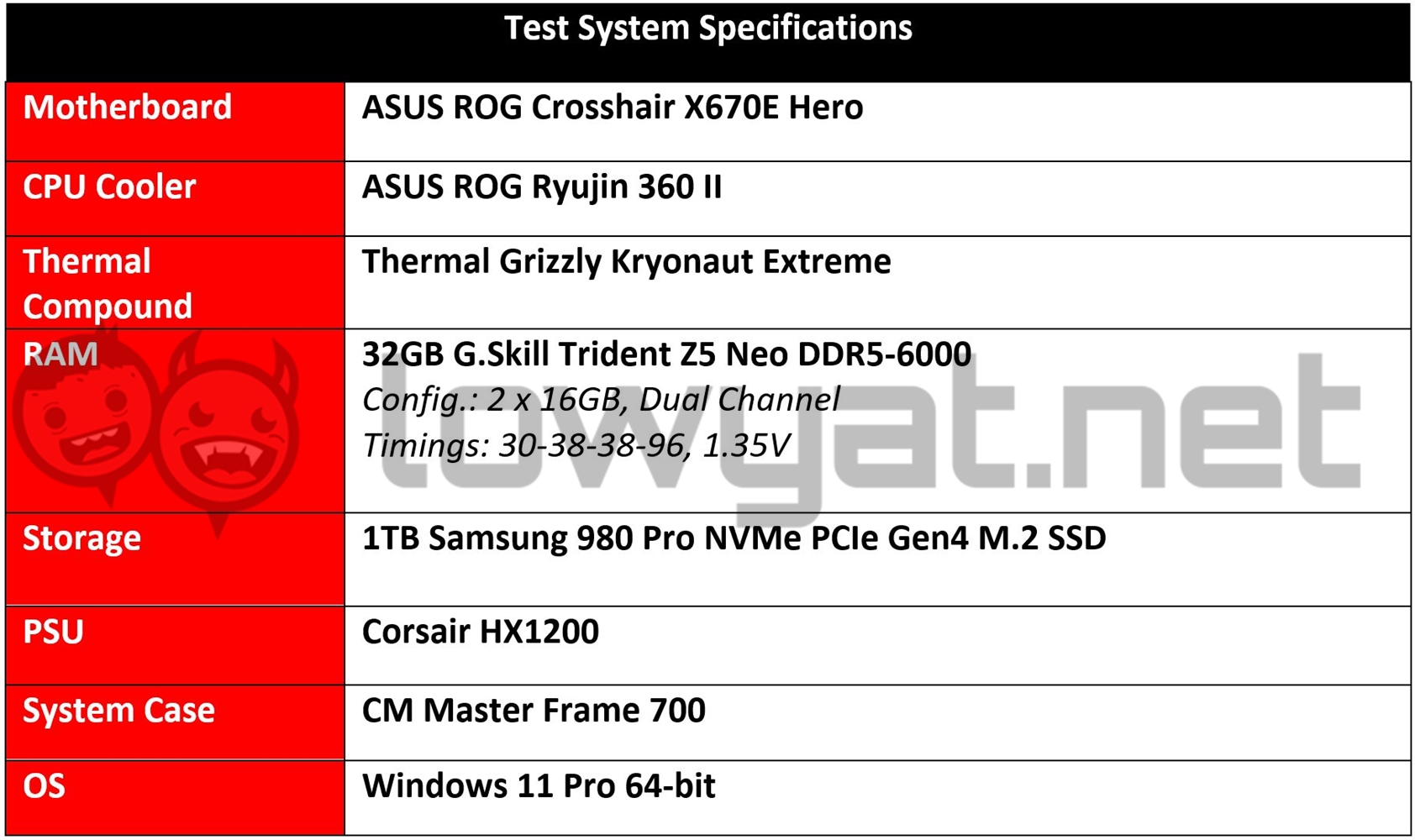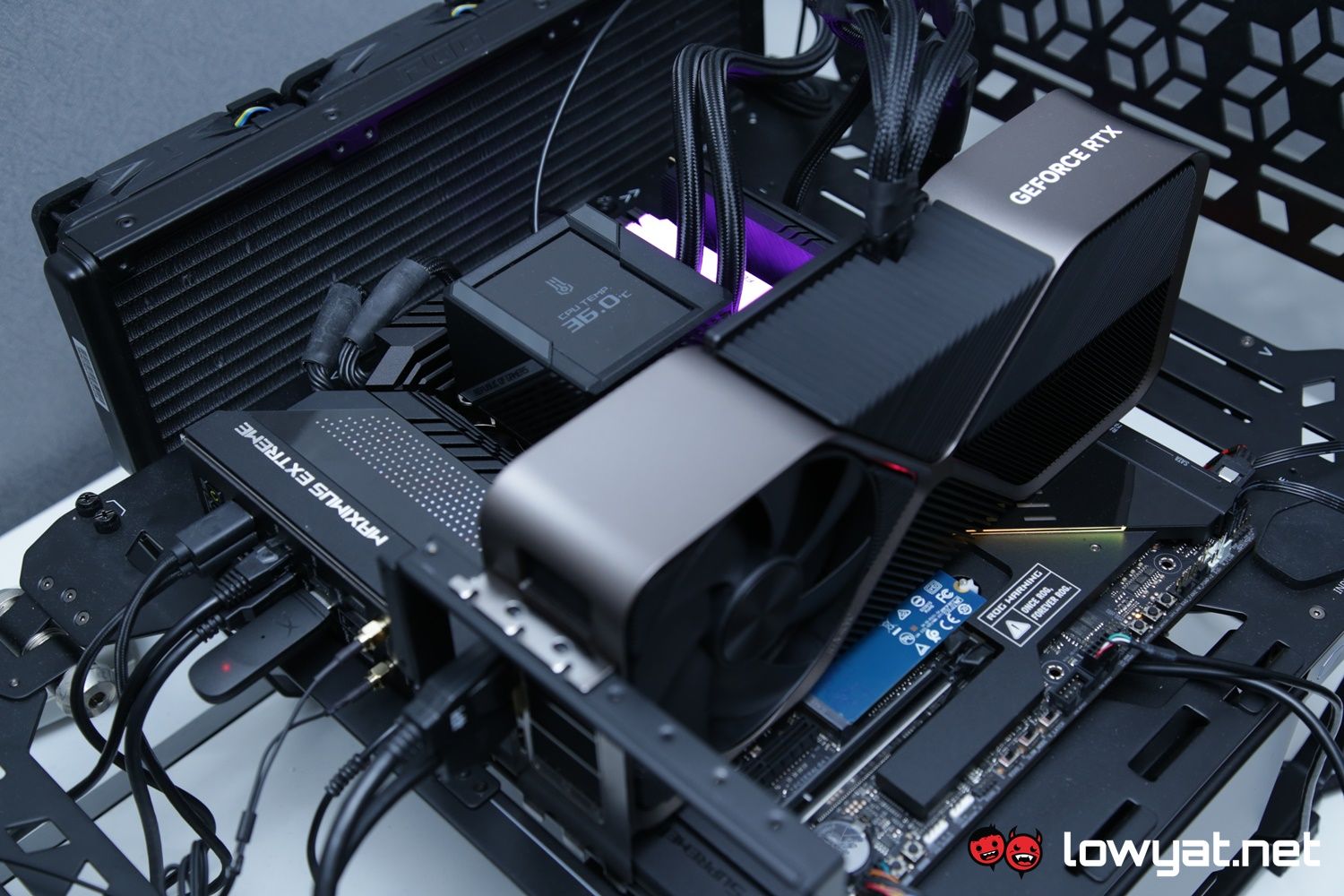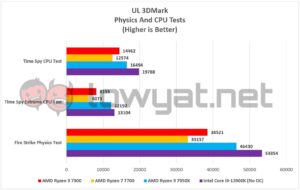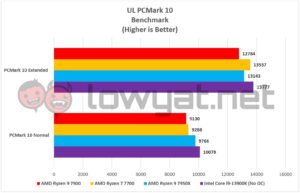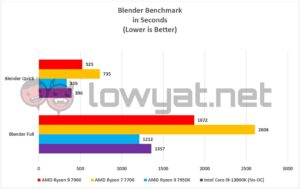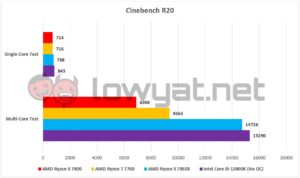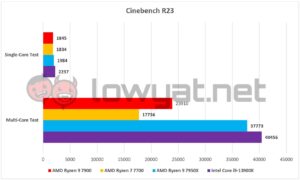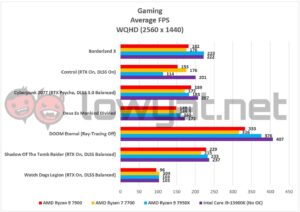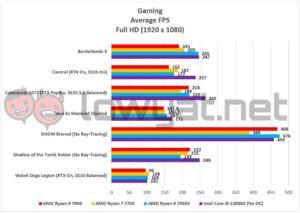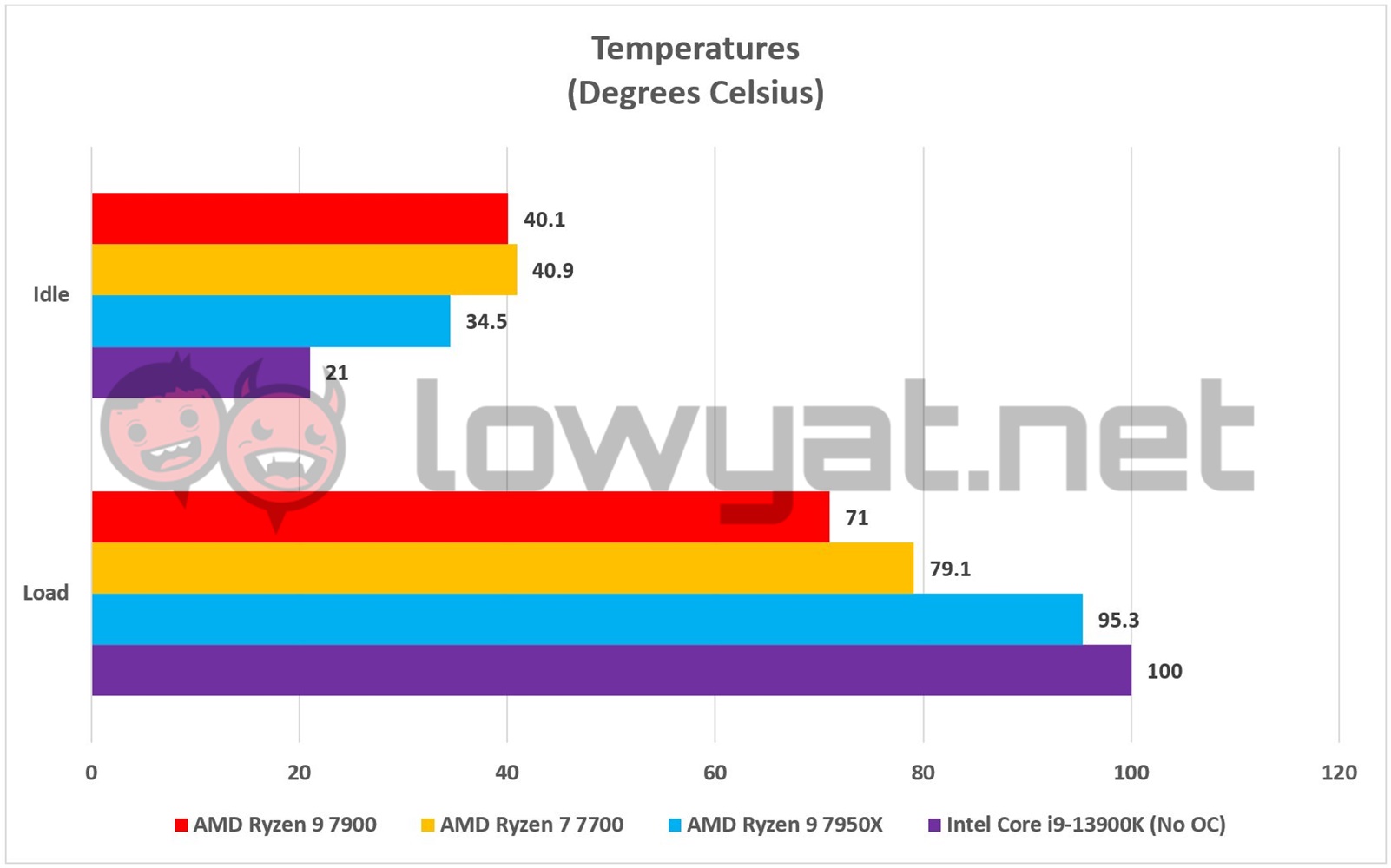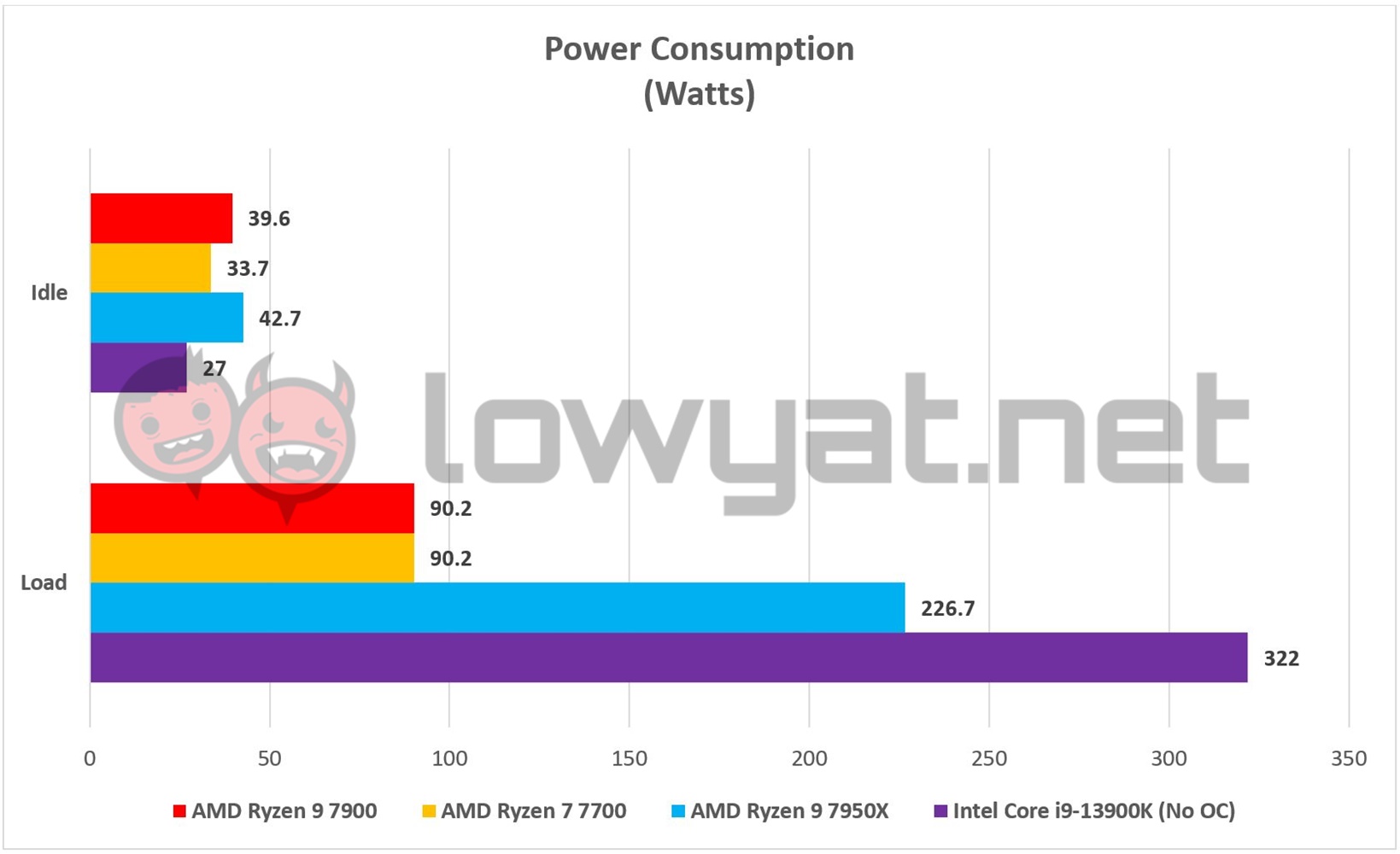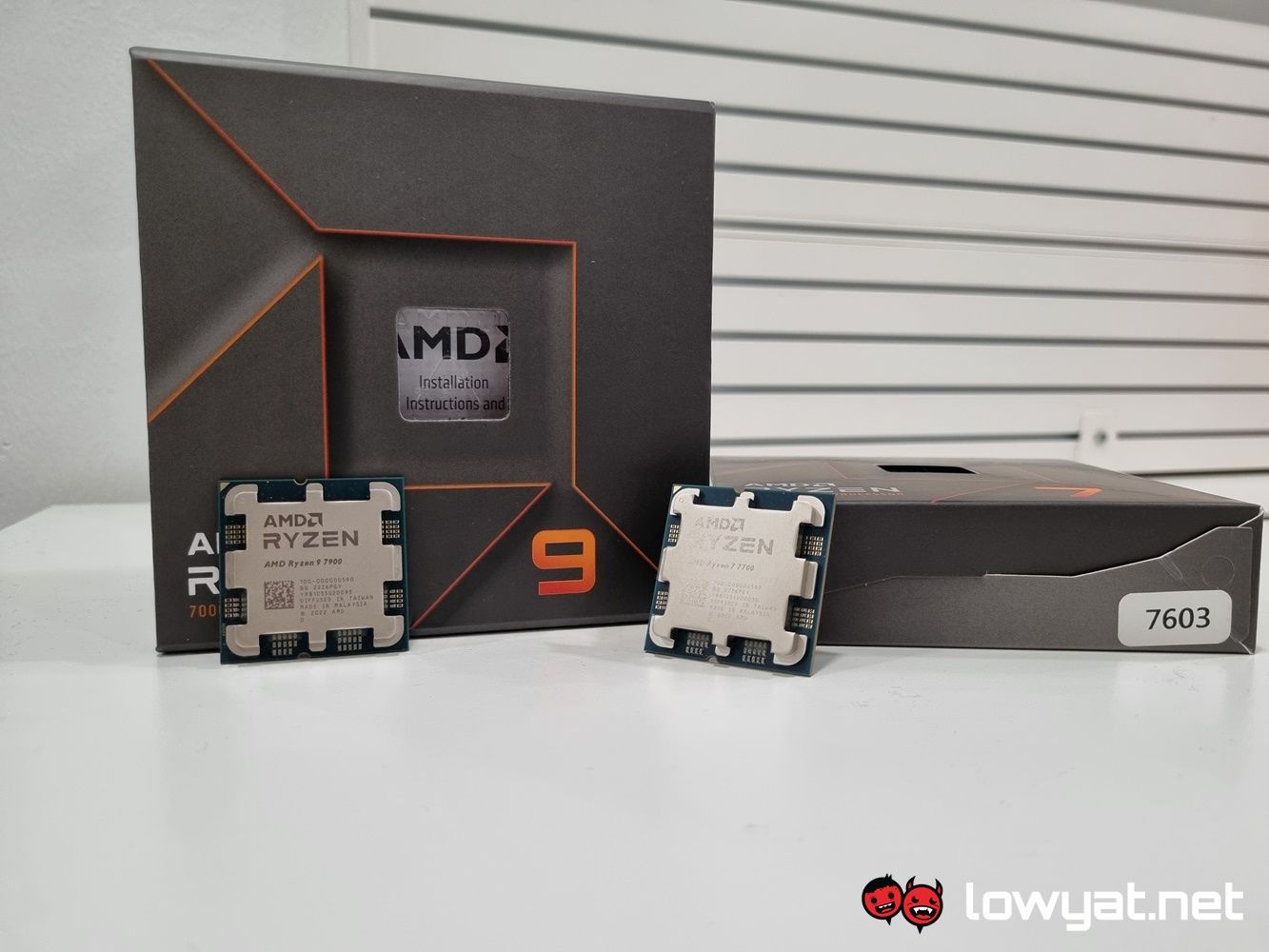Back in January, AMD released three additional processors: the non-X SKUs of the Ryzen 7000 Series. the Ryzen 9 7900, Ryzen 7 7700, and Ryzen 5 7600. All three CPUs are distinct from their X-rated counterparts, in that their operating TDP peaks at 65W, technically speaking.
In this review, I’ll be taking a look at both the 7900 and 7700 simultaneously, given that AMD passed both processors to us. Also, it saves me a lot of time in terms of posting up reviews and this way, you can see their prowess side-by-side.
Specifications
Design
As mentioned, one of the key differences between AMD’s X-factored and non-X Ryzen 7000 Series CPUs are the amount of power they require at peak performance. For context, our Ryzen 9 7950X has a maximum TDP of 170W, which is significantly higher than even Intel’s Core i9-13900K or Core i9-12900KS. For both the 7900 and 7700, these CPUs are rated to deliver similar performance metrics but at a maximum TDP of 65W, at least on paper. I’ll address that lost point later in the power consumption and temperature section of this review.
But that itself is the beauty of the non-X Ryzen 7000 Series CPUs. Again, while the X-Series CPUs have a higher TDP, AMD had actually shown us that these CPUs are still able to run just as well with its TDP limited to the same 65W limit, albeit with the expected hit to the performance of these CPUs, running as such. The 7700 and 7900, then, are both essentially exercises in developing a better performance-per-watt CPU. The best part of the CPUs, though? Unlike Intel’s own non-K CPUs, AMD still allows overclocking to be conducted on them.
To that end, the base specifications of the 7700 and 7900 are standard – both CPUs are based on AMD’s Zen 4 CPU architecture, designed and developed around TSMC’s 5nm die lithography, coupled with a 6nm I/O controller and RDNA2 integrated graphic cores. Although, just like other Ryzen 7000 Series CPUs, don’t expect the GPU cores in these CPUs to serve as an alternative to purchasing a dedicated graphics cards. Again, those cores are barebones and in reality, the chipmaker says that it is primarily there for if one needs to make a quick diagnostics check of the system they are installed in.
In terms of pricing, both the 7700 and 7900 have appealing price points of RM1569 and RM2069, respectively. Compared to its direct X-rated siblings, that’s an average difference between RM300 and RM500. That is money you can either save for a rainy day or allocate toward purchasing a better component to pair with these processors.
Testbench
To test both the Ryzen 7 7700 and Ryzen 9 7900, the testbench that I am using is the same as the one that I initially used to test the Ryzen 9 7950X when I first received it. In other words, I’m using the same ASUS ROG Crosshair X670E Hero motherboard, the ROG Ryujin 360 II AIO cooler, 32GB DDR5-6000 EXPO RAM from G.Skill’s Trident Z5 Neo lineup, and a Corsair HX1200 PSU. Further, Thermal Grizzly’s Kryonaut Extreme’s paste is used to maintain contact between the CPU and the cooler, while an NVIDIA GeForce RTX 4090 Founders Edition (FE) graphics card as output.
Again, as I have conducted for the past several reviews, I will be overclocking neither the 7700 nor 7900 CPU and simply running them out of the box. This has always been the case in my labs, and my argument behind my decision is simply because, at some points several years ago, processors on all fronts reached a tipping point that pushing their speeds beyond their rated boost clocks would yield little or close to negligible gains.
On another note, I am benching the 7700 and 7900 against the 7950X and Intel Core i9-13900K, the former primarily because, besides the two, that was the only Ryzen 7000 Series CPU I have currently tested.
Benchmarks
Right out of the gate, both the 7700 and 7900 prove that they are not just some greatly diluted version of their X-based peers. Granted, in the synthetic benchmarks, they tend to look slower than the 7950X and Intel’s 13900K, but the scores clearly show that these CPUs are able to classified as beasts of burden, when and as necessary.
In fact, the single-core scores in Cinebench R20 and R23, for both the 7700 and 7900 put them virtually on par with the 13900K, a feat that AMD had once struggled to do with its previous generation Ryzen processors.
As far as gaming goes with the 7700 and 7900, I think it’s safe to say that the two processors are exceptionally capable in the subject. As seen in the graphs above, both CPUs were able to maintain average framerates above the 100fps mark, at both 1440p and Full HD resolutions. Non-X Ryzen 7000 Series CPUs they may be, but the bottom line is that they are still Zen 4 processors and as such, are designed to deliver enthusiast-level performance numbers with much better performance-per-watt.
Temperature And Power Consumption
As far as temperatures go, both the 7700 and 7900 run considerably cooler than the 7950X and 13900K, mainly due to the fact that they both have fewer cores and, more importantly, it is due to their 65W nature. At full load, the two processors managed an average of 80°C, while their idle temperatures actually stabilised around the 40°C mark. And mind you, this is with the ambient temperature kept at a comfortable 20°C, as well as using an open testbench.
But while AMD has said that its non-X Ryzen 7000 Series are rated to run at just 65W, that statement isn’t actually all that true. You see, at peak performance, both CPUs were shown to be drawing closer to 91W on a full load. While this is clearly by design by AMD’s engineering team, this is actually the first time I’ve actually seen any of the brand’s CPU offerings actually push themselves that hard. Nevertheless, it is still an impressive feat that these processors are able to keep their operating power consumption below the 100W mark.
Conclusion
With an average price reduction of RM400, both the Ryzen 7 7700 and Ryzen 9 7900 are, without a doubt, two high-end, high-performing CPUs with the best performance-per-watt and ringgit-to-performance ratio that I’ve had in my lab for review. It is impressive to think that, even with an on-paper 65W TDP softcap, these processors are able to throttle all the way past the 5GHz threshold, maintain said speeds, and do so without imitating a furnace or stove.
At this point, I have one question for AMD, in regards to the 7700 and 7900: if you were able to produce CPUs as capable as these, then why the devil did you even bother with the rest of the Ryzen 7000 Series? Honestly, I am all for alternatives and experimentations, but with the kind of performance we’re getting with these non-X CPUs, it’s hard not to feel that the chipmaker is shooting itself in the foot here.
But that aside, if you’re planning on picking up either the 7700 or 7900, rest assured that you won’t be disappointed with their performance.
Follow us on Instagram, Facebook, Twitter or Telegram for more updates and breaking news.


